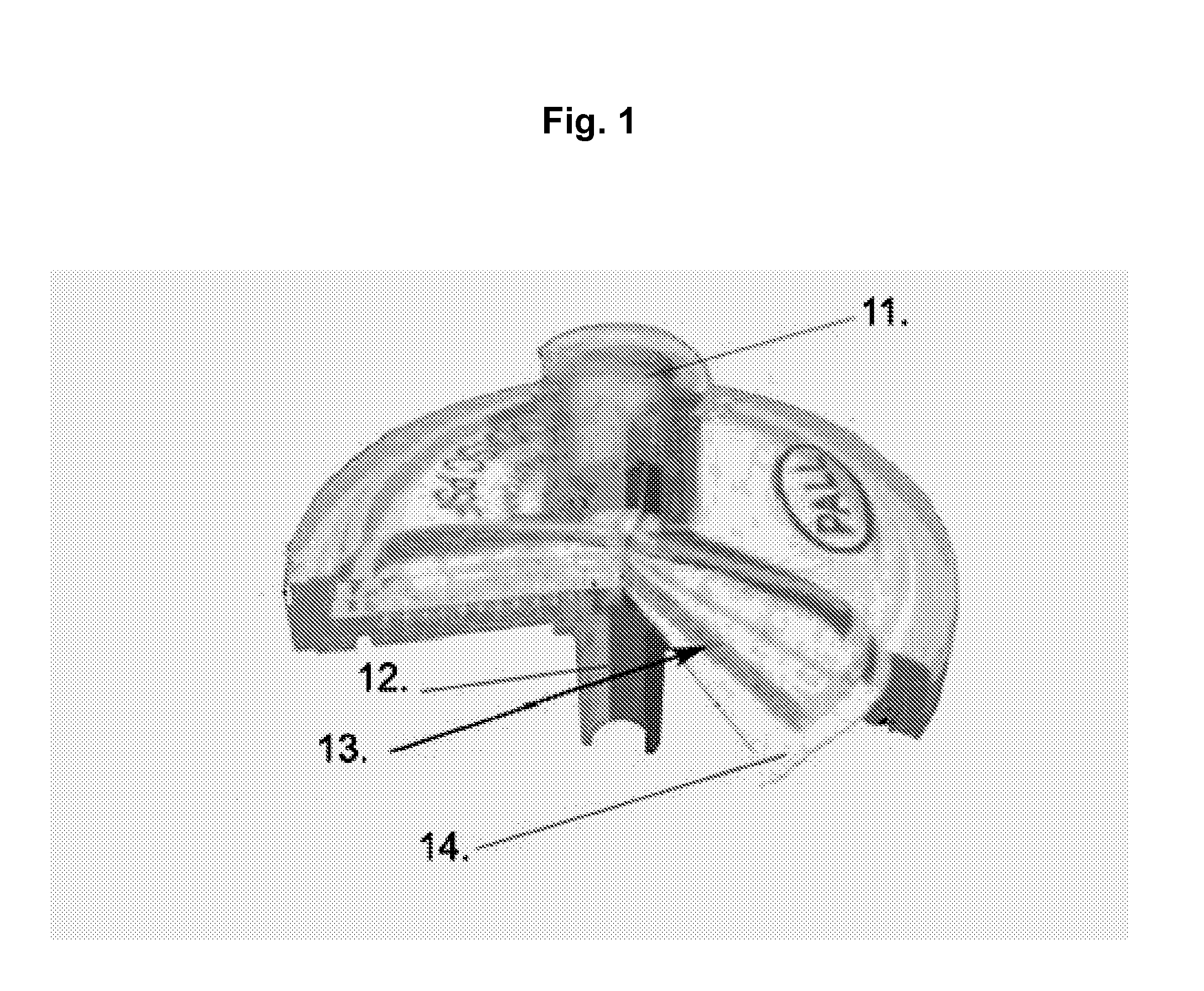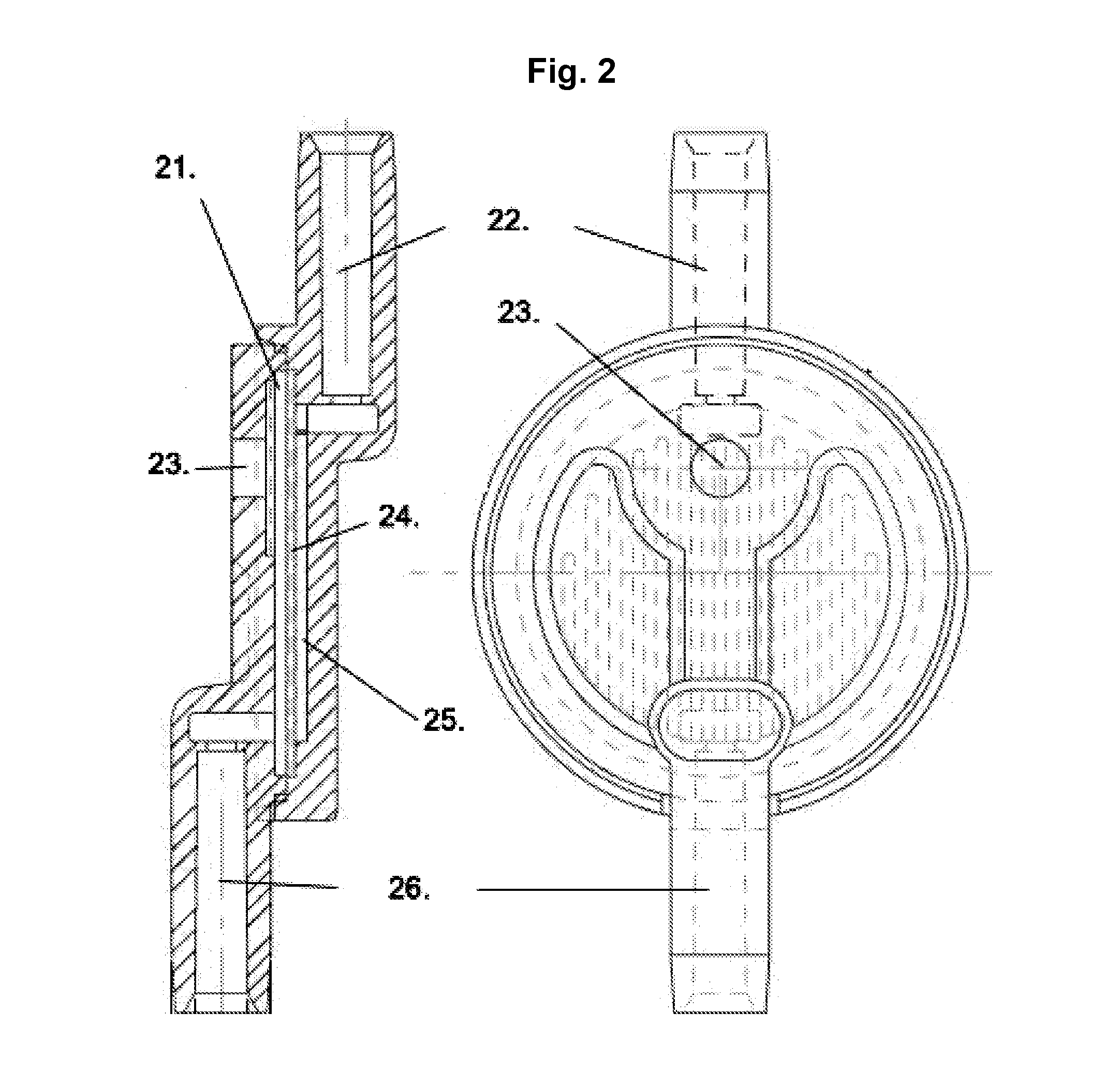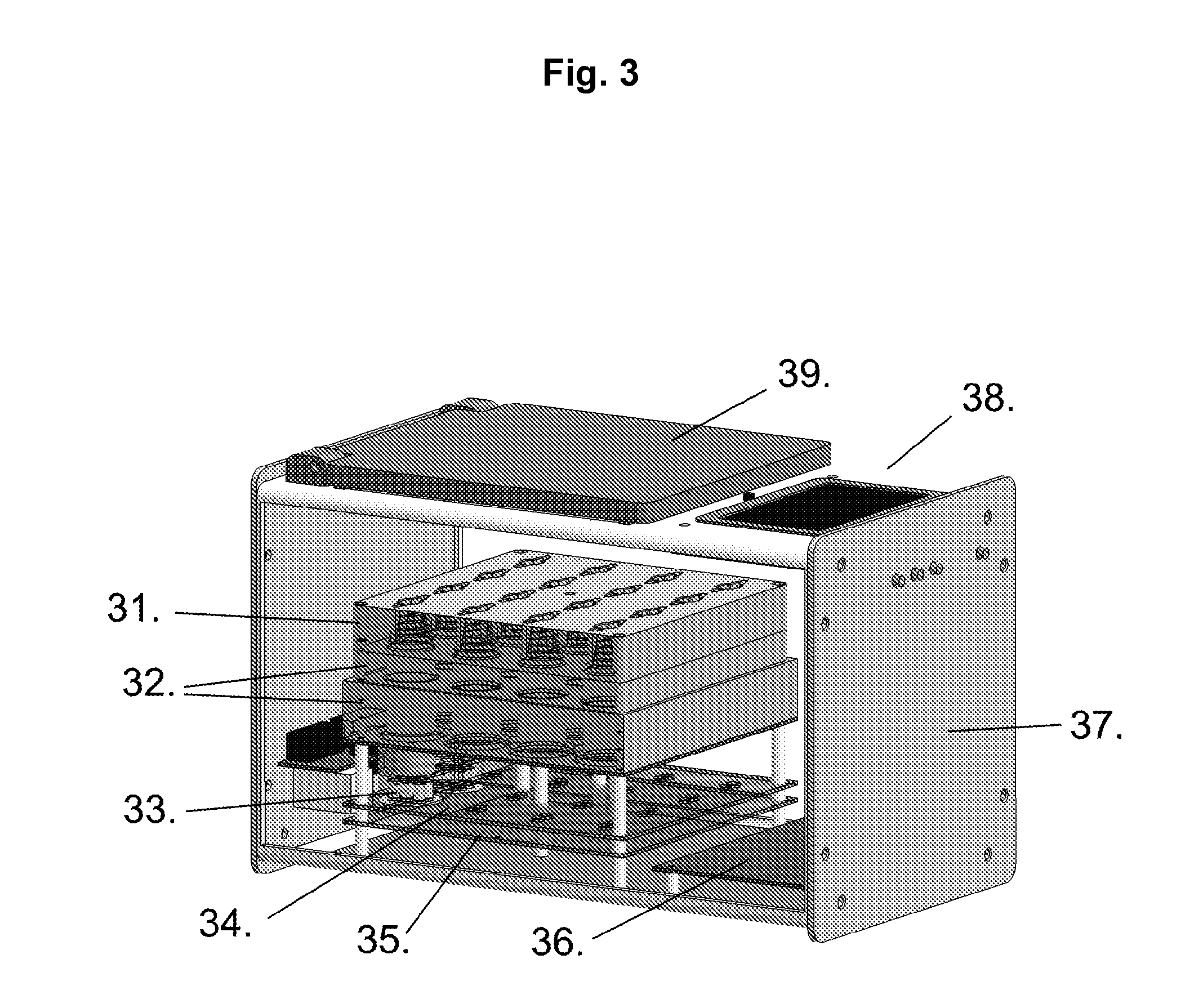Integrated Bioanalyzer
a bioanalyzer and integrated technology, applied in the field of integrated bioanalyzers, can solve the problems of increasing the potential for contamination, unable to differentiate viable from non-viable organisms, and unable to differentiate viable from non-viable organisms, and achieve the effect of adequate clarity
- Summary
- Abstract
- Description
- Claims
- Application Information
AI Technical Summary
Benefits of technology
Problems solved by technology
Method used
Image
Examples
example 1
Sample Preparation, Assay and Organism Recovery Using the Integrated Bioassay Method
[0138]A number of different form factors are included as examples of integrated filter Assay Cartridge devices (IFAC). Similarly, there are several methods that can be used to prepare samples for testing in the Integrated BioAssay (IBA). Perhaps the simplest IFAC example device is a syringe filter (e.g., Pall Acrodisc™) as shown in FIG. 1; typically a small round disk device with an inlet and outlet port which may have luer-lock fittings on one or both of the ports. A simple preparation method for these syringe filters useful for testing small sample volumes is to simply add the test volume and detection fluids using a pipettor. As a simple example of the syringe filter's utility as an IFAC, a dilution series of microbial samples (E. coli) was prepared using 13 mm Pall Acrodisc™ syringe filters and a pipettor then tested in the Rapid BioAnalyzer (RBA).
[0139]Serial dilutions of E. coli (ATCC 25922) we...
example 2
Detection of Growth by the Integrated Bioassay—Utility of Derivative Calculations
[0145]The following example is presented to illustrate the type of data that the instrument can acquire and that a single “assay endpoint” can easily lead to incorrect conclusions regarding the presence or absence of viable organisms in unknown environmental samples. Further, the example demonstrates the valuable utility of the derivative calculations used in the IBA approach to determine if and when growth of viable organisms has occurred.
[0146]The fluorescent signal in a test sample can change for several reasons unrelated to actual growth of the target organism. Hydrolysis of the glucuronide or galactopyranoside bond will occur at a slow but measurable rate, releasing the fluorescent reporter conjugates. Samples with glucuronidase or galactosidase enzymes present in samples at the initiation of the assay will contribute to changes in fluorescence. These enzymes can come from senescent target organism...
example 3
Method for Sample Preparation in a Syringe Filter Using Negative Pressure
[0150]Water collected from a drinking water source was assessed for the presence of coliforms and E. coli in a simple, integrated manner using the integrated filter device (IFAC) and bioassay instrument. Compliance with regulatory statutes requires testing of 100 mL of water for the presence (or absence) of any coliform bacteria. The following example describes a simple method for preparation of the syringe version of the IFAC using negative pressure (suction) to process 100 mL samples. Additionally, the example provides a simple description of how the Integrated BioAssay can be used to assess toxicity of a water sample by measuring metabolic changes in a known organism. One-hundred milliliter samples are conveniently prepared and tested in the following manner.
[0151]Two 300 mL samples of tap water were collected into sterile glass bottles, one with 10 mg sodium-thiosulfate and one without thiosulfate. The wate...
PUM
| Property | Measurement | Unit |
|---|---|---|
| time | aaaaa | aaaaa |
| volumes | aaaaa | aaaaa |
| volume | aaaaa | aaaaa |
Abstract
Description
Claims
Application Information
 Login to View More
Login to View More - R&D
- Intellectual Property
- Life Sciences
- Materials
- Tech Scout
- Unparalleled Data Quality
- Higher Quality Content
- 60% Fewer Hallucinations
Browse by: Latest US Patents, China's latest patents, Technical Efficacy Thesaurus, Application Domain, Technology Topic, Popular Technical Reports.
© 2025 PatSnap. All rights reserved.Legal|Privacy policy|Modern Slavery Act Transparency Statement|Sitemap|About US| Contact US: help@patsnap.com



